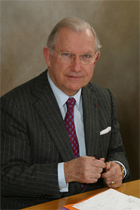The main operations of the Opera - between traditions and improvements
Artistic operations - production and performance of lyrical and ballet productions and shows - remain the Opera's raison d'être. The School of Dance continues to train to excellence the majority of future ballet company dancers.
The three permanent artistic groups - the orchestra, the ballet and the choir - continue to reinforce or acquire a unanimously recognised level of quality.
Stage work organization, at the Bastille Opera House, has experienced an unprecedented revolution at the beginning of the 1990s. The monitoring of each production by the same technicians and company officers has become the norm, for reasons of effectiveness, punctuality, quality and safety of the technical and artistic work on the stage.
Despite some strongly held, often very old and sometimes obsolete traditions, regarding artistic, technical and administrative operations due to the Palais Garnier working traditions, the Paris Opera continues to adapt to new technologies. The reduction of working time increases the cost of manpower. Competition for the most important purchases is being strongly organized.
Staff management
Hugues Gall has organized stronger management responsibilities, all over the organization.
A social agreement of 1993 reaffirms the established rights of Opera personnel such as the major career management regulations, but provides a reasonable amount of flexibility required by changes in artistic production and scheduling.
Discipline has become an organizational requirement.
Staff and wages evolutions
The book describes the human resource policy, the staff number evolution and the wages policy between 1993 and 2004, its challenges and mechanisms.
The number of the lowest paid jobs is regularly decreasing.
The implemented wages policy seeks to reconcile efficiency and equity. In 2000, for a number of reasons that the book analyses, this policy, though, led to a violent social crisis.


